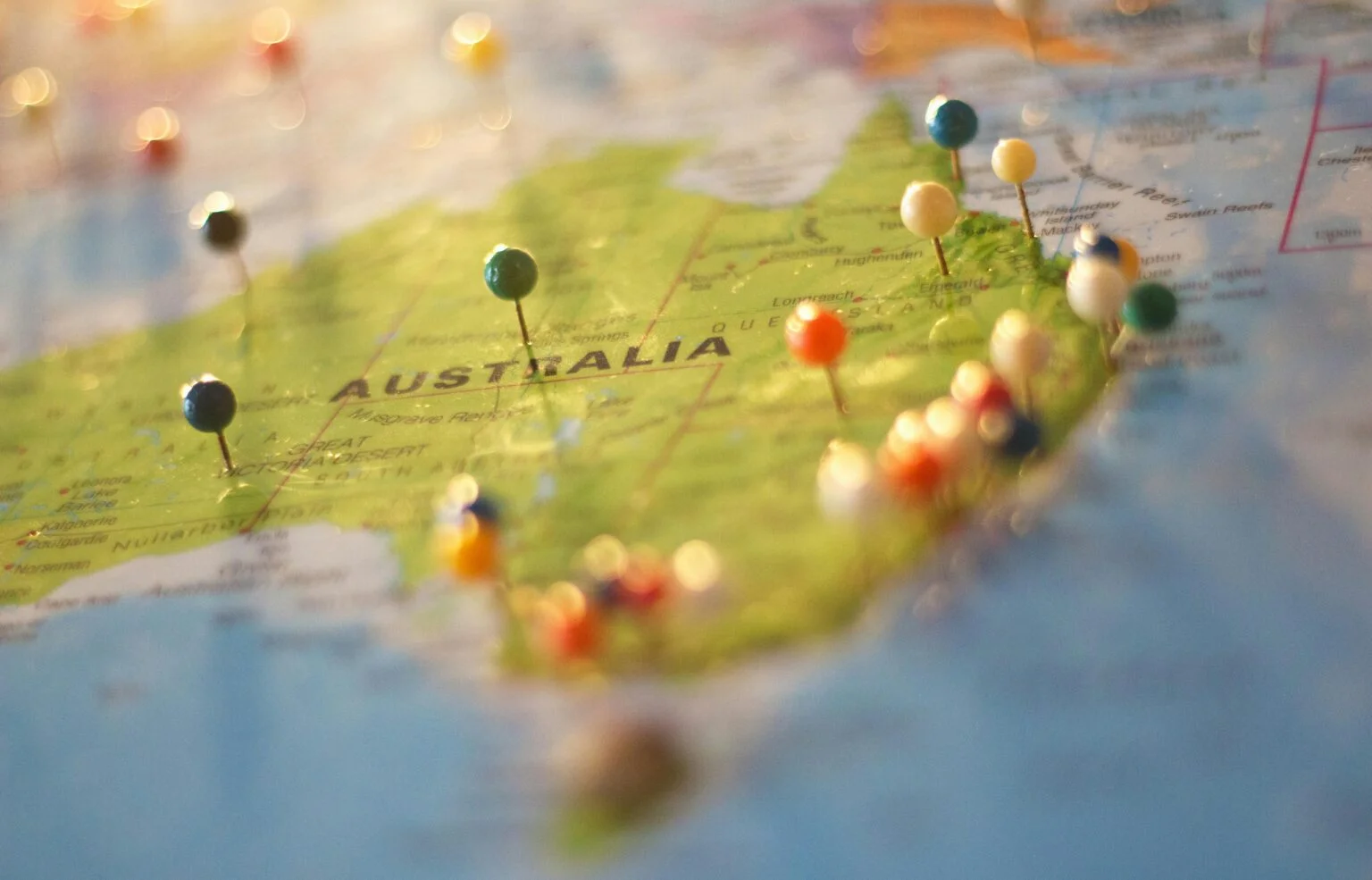Planning a trip to the Land Down Under requires careful consideration of when to go. The best time to visit Australia varies dramatically depending on which regions you plan to explore, what activities you want to experience, and your tolerance for different weather conditions. As a continent-sized country spanning multiple climate zones, Australia offers year-round travel opportunities, but timing your visit strategically but planning when to go can make the difference between a good trip and an adventure you’ll never forget.
I want a world in which we send you Marmite, you send us Vegemite, we send you Penguins and you send us, with reduced tariffs, these wonderful Arnott’s Tim Tams.
Boris Johnson
In this comprehensive guide, we’ll break down Australia’s seasons by region, highlight the optimal times for specific experiences like wildlife viewing and beach activities, and provide practical advice to help you plan your perfect Australian journey. Whether you’re dreaming of snorkeling the Great Barrier Reef, exploring the rugged Outback, or experiencing the vibrant culture of Australia’s cities, understanding the seasonal patterns will ensure you make the most of your visit.
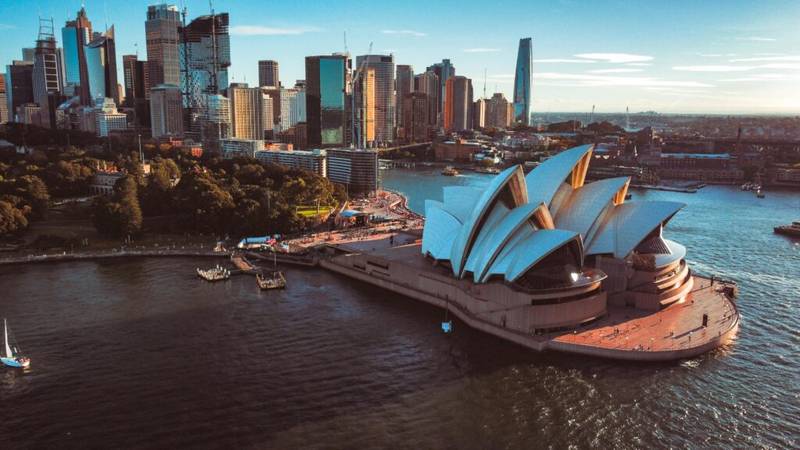
Image: Panoramic view of Sydney Harbor with Opera House and Harbor Bridge under blue skies.
I. Understanding Australia’s Seasons: The Reverse Calendar
Planning a trip to Australia? First, flip your seasonal brain upside down! 🌀
Unlike North America, Europe, or Asia, Australia’s seasons run in reverse — which means your summer vacation could actually be winter Down Under.
Here’s the quick cheat sheet:
- Summer (Dec–Feb):
- North: Hot & humid (hello tropical storms!)
- South: Warm & dry — great for the beach, not for hiking mid-day 🥵
- 🍂 Autumn (Mar–May):
- Gorgeous foliage in southern regions (Melbourne, Adelaide, Tasmania)
- Mild temps = perfect for wine country & road trips
- ❄️ Winter (Jun–Aug):
- Snow in alpine areas like the Snowy Mountains
- Dry & sunny in the north (Cairns, Darwin = ideal)
- 🌸 Spring (Sep–Nov):
- Flowers blooming, temps rising — and fewer tourists than summer
- Great shoulder season for just about everywhere
🎒 Gohub travel tip: No matter when you land, your Gohub eSIM activates instantly — so you’re ready to book a local tour, check the forecast, or find the best brunch spot before you even grab your luggage.
📱 Exploring Down Under? Here’s the cheapest eSIM for Australia to stay connected across time zones.
II. Best Time to Visit Australia – Regional Breakdown by Weather & Vibes
From coastal cities with epic skylines to coral reefs and red deserts, Australia’s vast size means the weather can shift dramatically depending on where you go—and when. Planning around seasons is key to making the most of your Aussie adventure.
Here’s your regional guide to the best time to visit Australia, tailored by experience and climate:
Sydney & New South Wales: Year-Round, But Spring & Autumn Shine
Sydney is your classic all-rounder—beaches, food, festivals, coastal hikes. But not all months are created equal.
Spring (September to November)
- Ideal for: City exploration, coastal walks, outdoor dining
- Weather: Mild temperatures (15-24°C/59-75°F) with occasional rainfall
- Highlights: Jacaranda trees blooming in October-November, creating purple canopies throughout the city
Summer (December to February)
- Ideal for: Beach activities at Bondi and Manly, harbor cruises, outdoor festivals
- Weather: Warm to hot (18-26°C/64-79°F), can reach above 30°C/86°F on hot days
- Highlights: Sydney Festival in January, New Year’s Eve fireworks
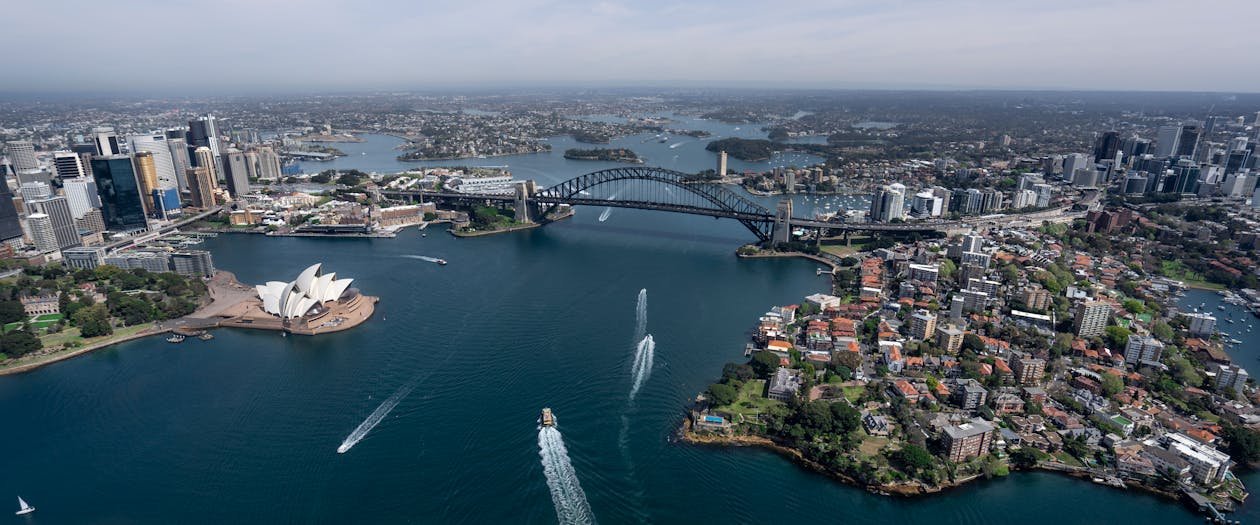
Image: Sydney
Autumn (March to May)
- Ideal for: Blue Mountains hiking, wine tasting in Hunter Valley
- Weather: Mild and pleasant (15-22°C/59-72°F) with less humidity
- Highlights: Vivid Sydney light festival (May-June)
Winter (June to August)
- Ideal for: Whale watching, museum visits, bargain accommodation
- Weather: Cool but rarely freezing (8-17°C/46-63°F)
- Highlights: Whale migration season along the NSW coast
Insider Tip: For the perfect balance of pleasant weather and fewer crowds, visit Sydney in March-April or October-November.
📱 Gohub pro move: Stay connected for real-time ferry schedules, trail maps, and translating that quirky Aussie slang. No roaming, just roaming free.
Best Time to Visit Melbourne and Victoria
Melbourne is well-known for its “four seasons in one day” weather patterns, but certain periods offer more reliable conditions.
Spring (September to November)
- Ideal for: Melbourne Cup (November), garden tours, Great Ocean Road drives
- Weather: Mild but changeable (11-20°C/52-68°F)
- Highlights: Royal Botanical Gardens in bloom, Spring Racing Carnival
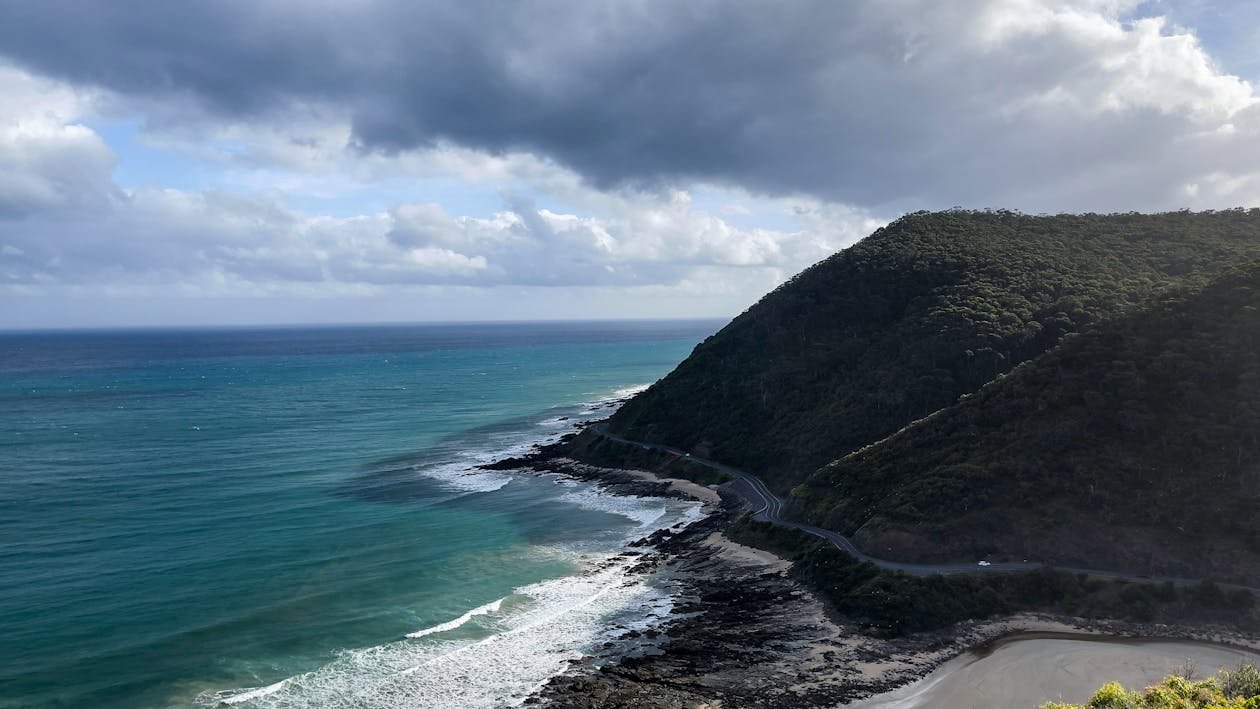
Image: Great Ocean Road
Summer (December to February)
- Ideal for: Beach days at St. Kilda, outdoor dining, Australian Open (January)
- Weather: Warm to hot (14-25°C/57-77°F), with occasional heat waves above 35°C/95°F
- Highlights: Summer festivals, outdoor cinema events
Autumn (March to May)
- Ideal for: Wine regions, cultural events, photography
- Weather: Mild and stable (11-20°C/52-68°F)
- Highlights: Melbourne Food and Wine Festival, autumn foliage in Dandenong Ranges
Winter (June to August)
- Ideal for: Cozy cafes, winter sports in Victorian Alps, bargain city stays
- Weather: Cool (7-14°C/45-57°F) with some rainy days
- Highlights: Skiing at Mt. Buller, winter markets
Insider Tip: Autumn (March-May) offers the most stable weather for exploring Melbourne and the surrounding regions.
📶 Gohub in action: Use your eSIM to hop on Myki public transport, book museum tickets online, or stream your tram ride through Fitzroy on IG Stories.
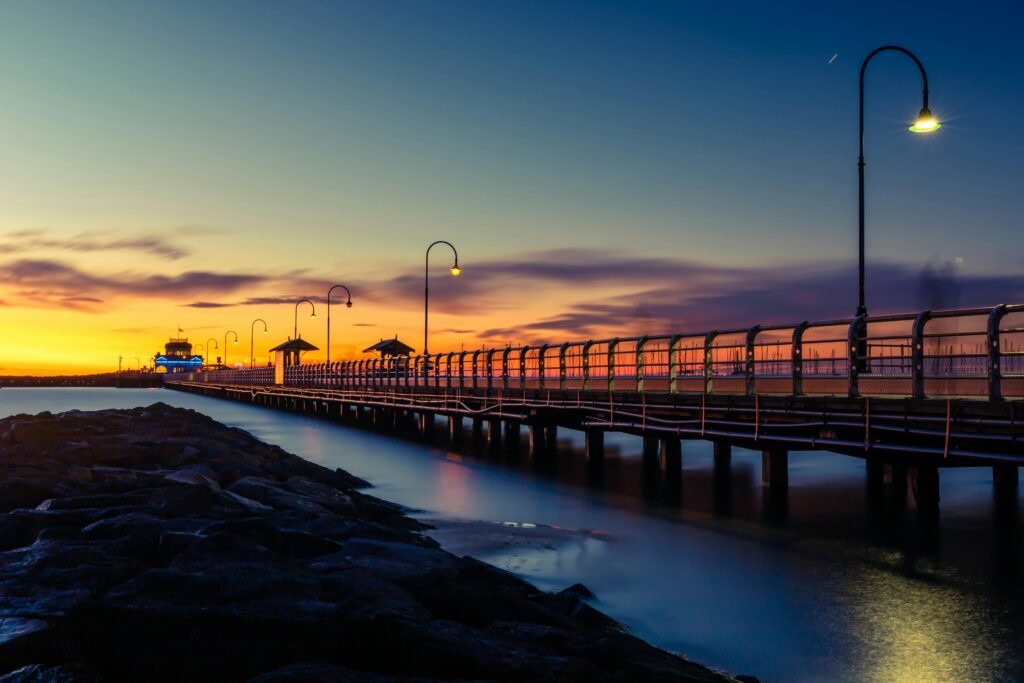
Image: Colorful autumn foliage in the Dandenong Ranges near Melbourne.
Best Time to Visit Queensland and the Great Barrier Reef
With its tropical sunshine, coral wonderlands, and rainforest escapes, Queensland is where Australia goes full paradise mode. But timing matters — especially when you’re diving into the deep blue.
Because this region sits in a tropical/subtropical climate zone, the year splits into two very different seasons: one for clear skies and reef trips, the other for waterfalls and jungle vibes.
This is peak travel season for a reason — the weather’s perfect, the reef is crystal-clear, and adventure is calling.
- Ideal for:
- Snorkeling & diving the Great Barrier Reef
- Sailing in the Whitsundays
- Island hopping & beach lounging
- Weather:
- 17–26°C (63–79°F), sunny and low humidity
- Almost no rain = happy hair and dry backpacks
- Highlights:
- Best underwater visibility
- Comfortable temps for outdoor activities
- Peak season for reef tours and marine life sightings
📲 Gohub travel win: Use your eSIM to track real-time weather on reef tour days, upload GoPro footage instantly, or find the best-reviewed boat tour — without worrying about dodgy hotel Wi-Fi.
Wet Season (November–April): Rainforest Feels & Off-Peak Bliss
While it may not be ideal for reef dives every day, this season has its own wild charm — misty jungles, flowing waterfalls, and quieter beaches.
- Ideal for:
- Exploring the Daintree Rainforest
- Chasing waterfalls in national parks
- Budget travelers (hellooo off-season rates!)
- Weather:
- 23–31°C (73–88°F), humid with afternoon storms
- Occasional cyclones (check forecasts before booking Far North trips)
- Highlights:
- Lush, vibrant greenery everywhere
- Fewer tourists
- Cheaper flights & hotels
- 🧠 Pro Tip: If you’re not a fan of crowds and don’t mind a little tropical thunder, wet season can be incredibly beautiful — just pack a poncho and an open mind.
Great Barrier Reef: When to Dive In
Timing your reef visit? Here’s the inside scoop:
- Best visibility: June to October – clearest water, epic marine life
- Warmest water: Dec to Feb – 28–30°C (82–86°F), like a heated pool
- Whale sharks (Ningaloo Reef): March to August
- Stinger season: November to May – wear protective swimwear (stinger suits are usually provided)
📶 Gohub in action:
Check tide charts, weather apps, reef health updates, or last-minute availability on dive boats — your Gohub eSIM keeps you reef-ready, even from island resorts or catamarans.
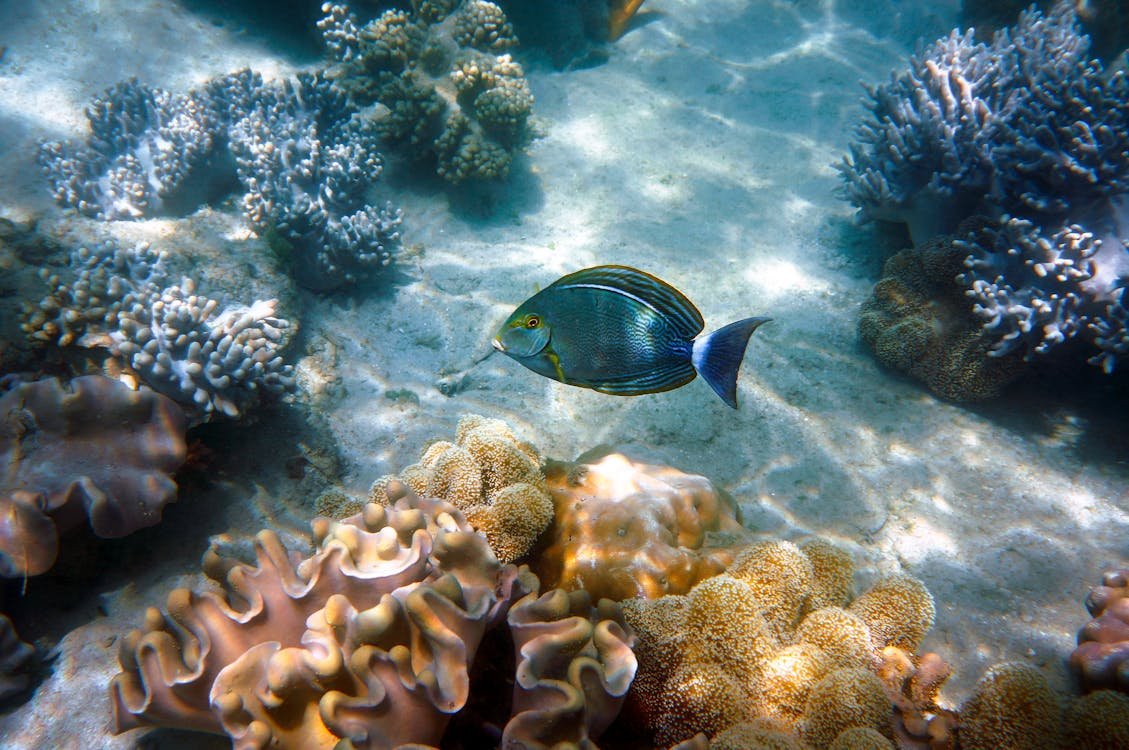
Image: Great Barrier Reef
Best Time to Visit the Northern Territory: Darwin and Uluru
Australia’s Northern Territory isn’t just wild — it’s spiritual. One moment you’re watching lightning crack across a purple sky in Kakadu, the next you’re walking around Uluru at sunrise, the rock glowing like fire.
But timing is everything here. With two wildly different climate zones, knowing when to go can be the difference between an epic outback escape… or a sweaty, storm-dodging struggle.
Top End (Darwin, Kakadu, Arnhem Land)
This tropical region is ruled by two distinct seasons — wet and dry, each with their own magic.
Dry Season (May–October)
This is when the Top End really shines — parks are open, roads are dry, and wildlife is everywhere.
- Ideal for:
- Kakadu National Park hikes
- Aboriginal rock art tours
- Fishing trips & billabong cruises
- Weather:
21–32°C (70–90°F), dry, breezy, and beautiful - Highlights:
- Full access to waterfalls & trails
- Cultural festivals (like Barunga or Darwin Festival)
- Crocodile spotting and golden sunsets
📶 Gohub in action:
Many Top End adventures are remote — so your Gohub eSIM is essential for GPS navigation, booking permits, or checking Kakadu park alerts on the fly.
Wet Season (Nov–Apr)
Yes, it’s humid. Yes, it pours. But the Wet transforms the landscape into something lush, wild, and cinematic.
- Ideal for:
- Birdwatching (especially in Kakadu)
- Waterfall photography
- Storm chasing (seriously — the skies are dramatic AF)
- Weather:
25–33°C (77–91°F), with heavy afternoon rains and possible flooding - Highlights:
- Fewer tourists
- Epic cloud formations & lightning storms
- Wildlife everywhere after the rain
💡 Insider Tip: Many parks partially close during peak wet months, so check road/park access daily — and always book flexible accommodation.
The Red Centre (Uluru, Alice Springs)
This is the beating heart of the Outback — wide open skies, ancient stories, and landscapes that will stay with you forever.
Winter (Jun–Aug)
Cool days, chilly nights, and perfect conditions for desert exploration.
- Ideal for:
- Uluru base walk or camel tours
- Stargazing in the desert
- Kings Canyon hikes
- Weather:
20°C (68°F) by day, 0–5°C (32–41°F) at night - Highlights:
- Clear skies
- Cozy Outback nights under the stars
- Ideal hiking conditions
📲 Gohub essential:
Outback = low signal zones. Stay mapped, informed, and connected with Gohub eSIM — especially helpful for self-drive trips or when you’re hundreds of km from the next fuel stop.
Summer (Dec–Feb)
Let’s be honest — it’s brutal. Temps can hit 45°C (113°F), and outdoor plans often melt away.
- Not recommended unless you love:
- Cheap hotels
- Empty trails
- 6am sunrise hikes (before the heat hits)
- Weather:
35–45°C (95–113°F) in the day, hot nights too - Highlights:
- Fewer tourists
- Budget-friendly rates
- Surreal sunrises without the crowds
💡 Insider Tip: May and September are golden months — cooler temps, open trails, and much smaller crowds around Uluru.
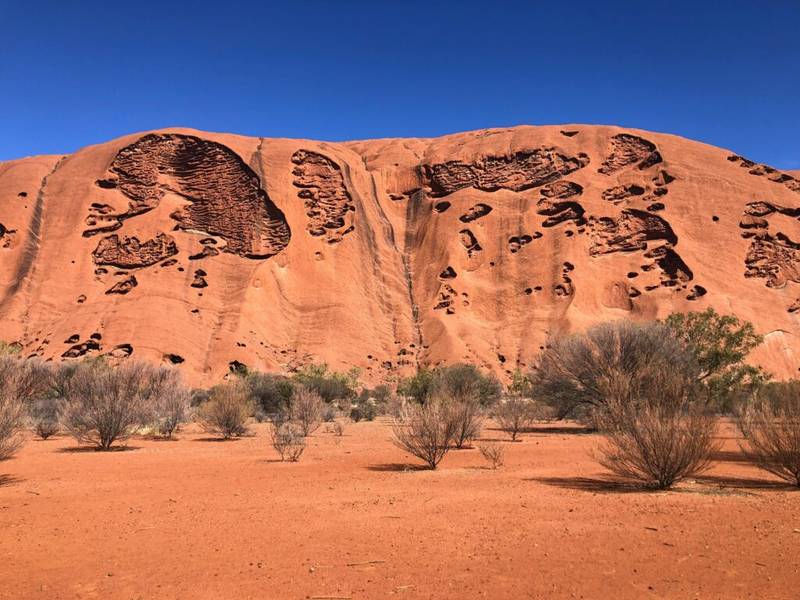
Image: Uluru at sunset with dramatic red and orange colors.
III. Seasonal Highlights: Australia’s Natural Phenomena
Australia isn’t just about beaches and barbies — it’s also home to jaw-dropping natural wonders that only happen at certain times of the year. Think dancing lights in the night sky and majestic whales breaching just offshore. These rare, time-sensitive experiences? Totally worth planning your whole trip around.
Southern Lights in Tasmania – The Aurora You Didn’t Know You Needed
That’s right — you don’t have to go to Iceland to see an aurora. The Aurora Australis, or Southern Lights, is one of Australia’s most magical natural displays — and way less crowded.
- Best Time to See: June to August (Tasmanian winter = aurora prime time)
- Where to Go:
- Bruny Island
- Mount Wellington (near Hobart)
- South Arm Peninsula
- Ideal Conditions:
- Cold, crisp, cloudless nights
- Far from city lights (camping helps!)
- Low light pollution + high solar activity = jackpot
- Tips for Chasing the Glow:
- Use apps like Aurora Australis Forecast
- Stay at least 2–3 nights to increase your chances
- Bring layers — it gets freezing cold out there!
🏞️ Love the outdoors? Explore top national parks to visit during the best season.
📶 Gohub travel tip:
You’ll want real-time aurora alerts and dark sky maps — and with your Gohub eSIM, you can check solar activity even from your remote cabin (no roaming = no regrets).

Image: Southern Lights Australia.
Whale Watching Across Australia – When & Where to Spot Giants
From humpbacks breaching near Byron Bay to blue whales cruising off WA, Australia’s coastline becomes a stage for one of nature’s most majestic performances: the annual whale migration.
Let’s break it down by region:
East Coast (NSW & QLD)
- Season: May to November
- Peak: July to October
- Species: Humpback whales, southern right whales
- Hotspots:
- Hervey Bay (QLD) – known as the whale nursery
- Byron Bay (NSW) – great land-based viewing
- Eden (NSW) – steeped in whaling history, now all about conservation
West Coast (WA)
- Season: June to December
- Peak: August to November
- Species: Humpbacks, blue whales, southern right whales
- Hotspots:
- Ningaloo Reef – snorkel with the whales (yes, really)
- Albany – dramatic cliffs + whale center
- Busselton Jetty – great family-friendly spot
South Coast (VIC & SA)
- Season: May to October
- Peak: July to September
- Species: Mainly southern right whales
- Hotspots:
- Warrnambool (VIC) – Logan’s Beach nursery
- Victor Harbor (SA) – excellent viewing platforms
📲 Stay in the know with Gohub:
Whales don’t wait around — spotting times change daily, so use your Gohub eSIM to check live whale sighting reports, book a tour last-minute, or stream your first breach to the fam back home. 🐳
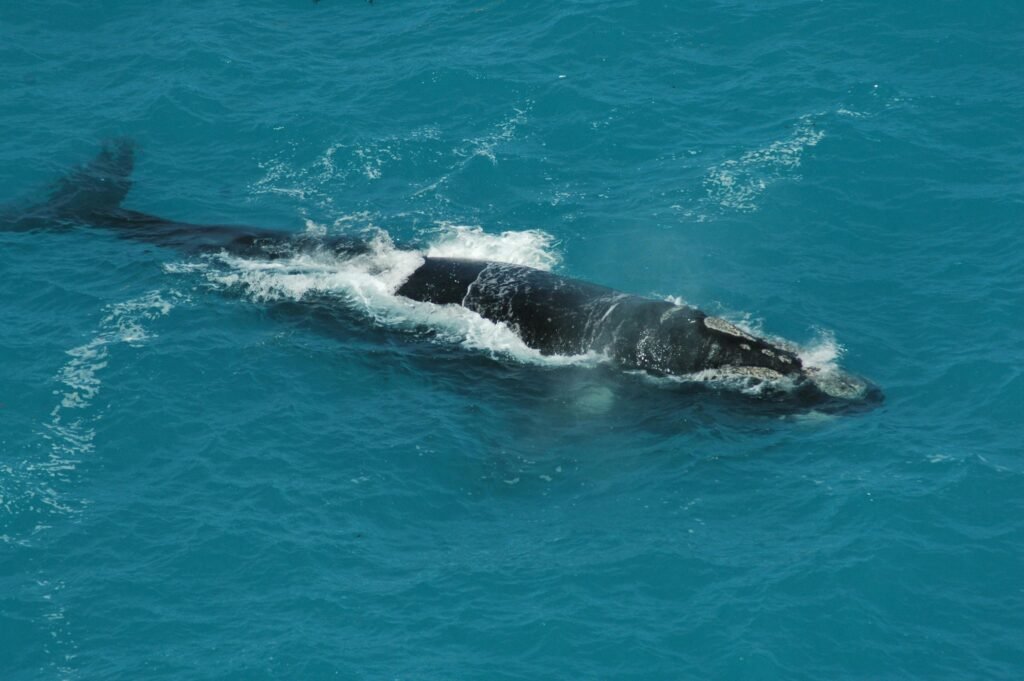
Image: Whale watching seasons in Australia
Wildflower Blooms in Western Australia – A Once-a-Year Natural Wonderland
If you thought WA was all red desert and turquoise coastlines, wait until you see it turn pastel pink, bright yellow, and purple in wildflower season. With over 12,000 species of native wildflowers — 60% found nowhere else on Earth — Western Australia becomes a living bouquet stretching across the outback.
It’s one of the largest wildflower displays on the planet, and it’s worth timing your trip around. When to See It
- Season: July to November
- Peak Bloom: September (this is when the carpets of everlastings explode!)
- 🌦 Weather in spring is sunny, dry, and perfect for road trips
Best Places to Catch the Bloom
- Coalseam Conservation Park – Wildflower central; vast fields of pink, yellow, and white everlastings.
- Lesueur National Park – More than 900 plant species packed into a biodiversity hotspot.
- Kalbarri National Park – Wildflowers + dramatic gorges = win-win for hikers and photographers.
- Wave Rock area – Combine blooms with one of WA’s quirkiest natural rock formations.
- Wildflower Way (Midwest WA) – Road trip heaven through flower-studded countryside.
What You’ll See
- Carpets of everlastings – Instagram can’t do them justice
- Rare orchids – Keep an eye out for the Queen of Sheba
- Endemic species – Over half of WA’s wildflowers grow only here
- Buzzing bees, butterflies, and that fresh floral scent in the breeze…
🧠 Gohub tip: Some species bloom for just a few weeks, and conditions change quickly depending on rainfall. Download wildflower tracking apps or visit local info centres for updates — and use your Gohub eSIM to check bloom hotspots on the go 📲
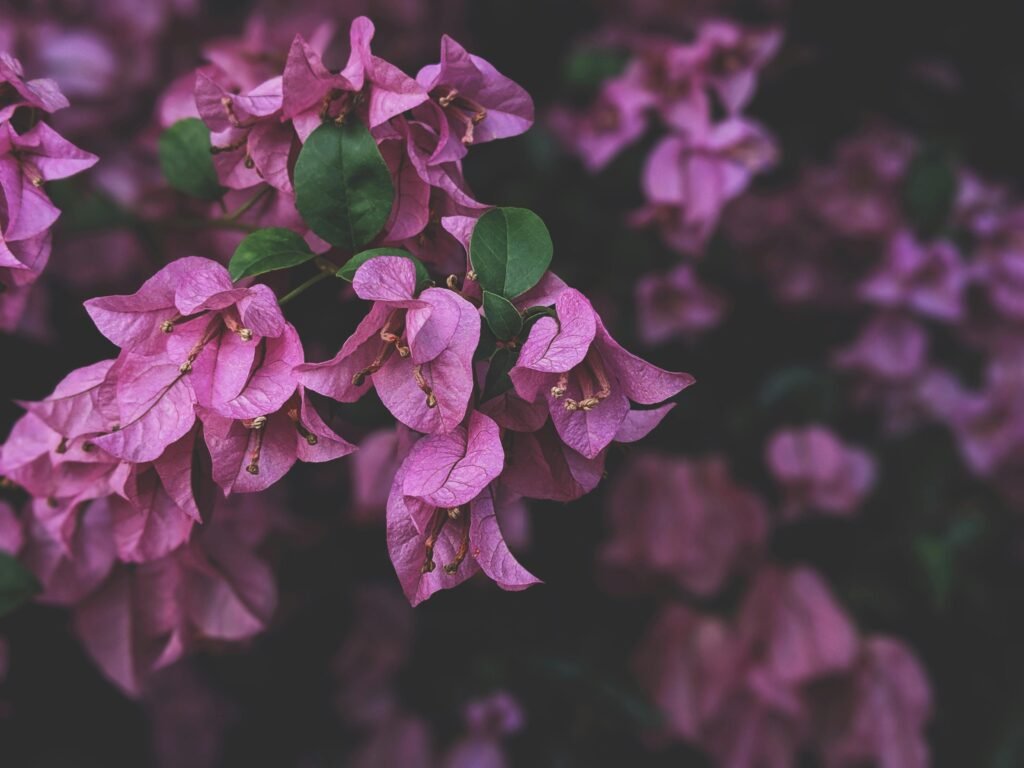
Image: Wildflower Blooms in Western Australia
IV. Travel Planning: What You Need to Know About Australian Seasons
If you’re planning a trip to Australia — or you’re based in Sri Lanka (or anywhere in Southeast Asia!) hoping to welcome Aussie travelers — timing is everything.
Because when Australians travel, they travel hard: airports are packed, flights surge, and leave calendars get cleared faster than a Friday arvo pint. Here’s when the big travel waves hit, and how to ride them smart
Australia’s Peak Tourist Seasons
Understanding when Australians travel is crucial for planning your visit:
Summer School Holidays (Mid-December – Late January)
Australia’s biggest travel season — families, beach bums, backpackers, everyone hits the road.
- Airfares spike (especially to Asia-Pacific!)
- Resorts fill up fast, especially Christmas–New Year
- Great summer vibes, but expect premium prices + bigger crowds

Image: Gold Coast, QLD
Easter Break (March–April)
A long weekend Aussies love to turn into a mini tropical escape.
- ✈️ Flights to Southeast Asia fill up quick
- 🌤 Bonus: It’s shoulder season in Sri Lanka = sweet weather + better deals
Winter School Holidays (Late June – Mid-July)
When Aussies escape the chill by chasing sun — and Sri Lanka is top of the list
- Perfect time for family beach breaks
- South & west coasts of Sri Lanka are gorgeous this time of year
- Many Aussies also travel domestically — book early
Public Holidays to Watch For
Savvy travelers extend these into long weekends:
- Australia Day – Jan 26
- ANZAC Day – Apr 25
💡 Pro tip: March–May and September–November = sweet spot for great weather, better prices, and fewer tourists. Book smart, travel smooth.
Staying Connected in the Great Aussie Outdoors
Australia is huge — and having reliable internet is a non-negotiable. Whether you’re on a road trip across the Outback or café-hopping in Melbourne, staying connected makes all the difference.
That’s where Gohub eSIM comes in:
- Instant Activation – Get online at the airport (no hunting for SIM kiosks)
- Nationwide Coverage – From big cities to beach towns and bush tracks
- Weather Updates – Crucial for hikes, diving, road trips
- Navigation Support – No signal drop while using Google Maps
- Real-Time Sharing – Post that Great Ocean Road drone shot while it’s still golden hour
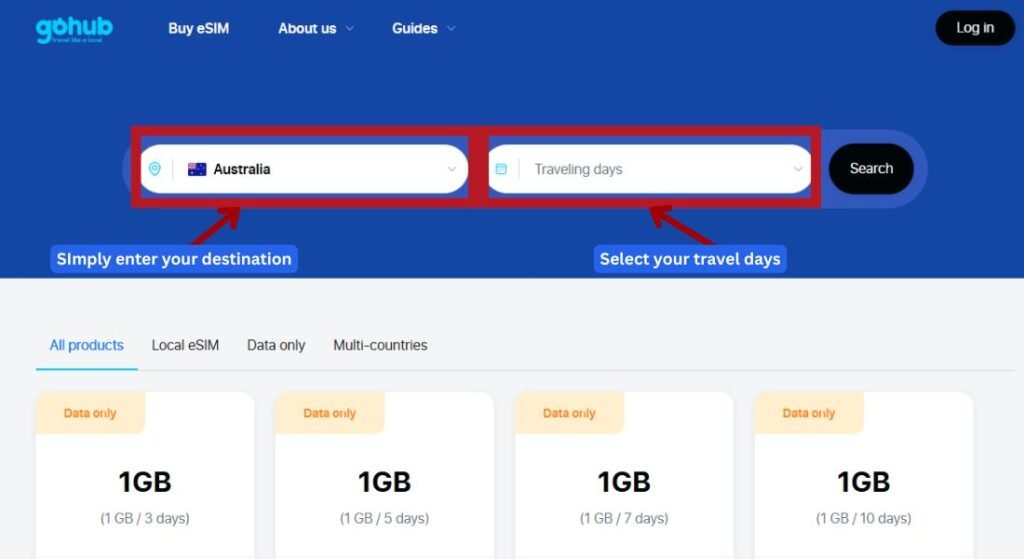
Image: Screenshot of the GoHub eSIM webpage, highlighting the destination input field with “Australia” selected, illustrating how users can easily search for eSIM data plans.
With Gohub eSIM, you can easily navigate between the best places to visit in Australia. Before going outside, check the weather, and when you get back, tell your friends and family about your adventures.
🚐 Planning a road trip? Check out the best road trips in Australia — from coastal drives to outback adventures, you’ll be spoiled for routes.
V. Seasonal Packing Guide for Australia – What to Bring, When to Bring It
Packing for Australia? It’s not one-size-fits-all. This continent’s got beaches, mountains, rainforests, deserts… and its weather is just as diverse.
So instead of throwing in “a bit of everything,” here’s how to pack smart for each Aussie season — and show up prepared (and sun-protected).
Summer (December–February)
Think sunshine, surf, and serious UV.
- Breathable, lightweight clothing – natural fabrics are your best friend
- High-SPF sunscreen – the Aussie sun is no joke
- Wide-brimmed hat + sunglasses – stay stylish, stay shaded
- Swimwear + beach gear – Bondi’s calling
- Light rain jacket – especially in tropical QLD & NT
- Insect repellent – mozzies love summer too
💡 Gohub tip: Use your eSIM to check daily UV indexes or locate that perfect secret beach (the one not on TripAdvisor 👀).
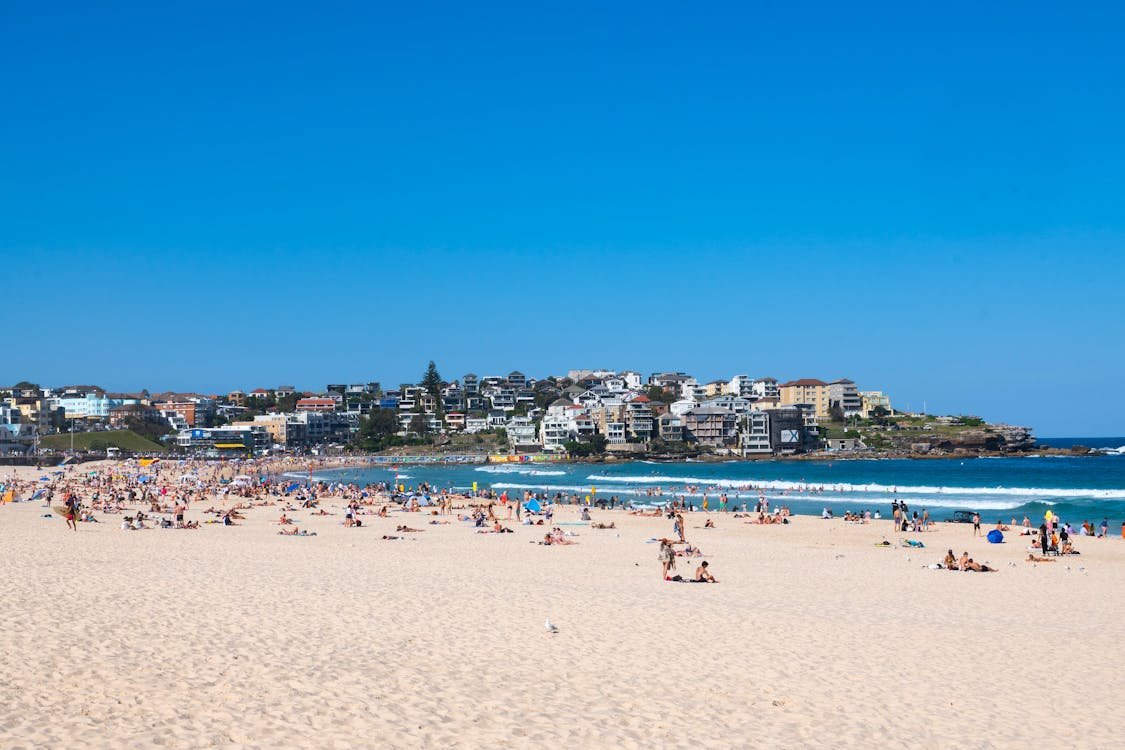
Image: Sunlit Day at Bondi Beach
Winter (June–August)
Yes, Australia has winter. And yes — it can get cold (especially in the south and Outback at night!).
- Warm layers – think fleece, knits, and puffers
- Waterproof jacket – especially if you’re heading to Melbourne
- Thermal base layers – for alpine ski trips or Red Centre nights
- Swimwear – Queensland beaches still say “come on in”
- Hiking boots – ideal for winter bushwalks and crisp blue skies
📶 Travel hack: No matter the temp, stay connected for real-time trail maps, snow reports, or coffee shop finds in the city using your Gohub eSIM.
Shoulder Seasons (March–May, September–November)
Aka the sweet spot: fewer crowds, great weather — and slightly trickier to pack for.
- Layering essentials – cool mornings, warm afternoons
- Rain protection – especially in the southeast
- Sun protection – don’t let the breeze fool you
- Comfy walking shoes – you’ll be exploring a lot
🧠 Insider move: These seasons are perfect for road trips. Keep your Gohub eSIM active to navigate offline, stream your sunset playlist, or translate that weird sign you found in the bush.
📊 Unsure how much internet you’ll need for the journey? Estimate your travel data needs here.
VI. Activity-Based Timing: When to Visit Australia for Specific Experiences
Not all travel goals fit neatly into seasons. Maybe you’re dreaming of salty beach days, epic hikes, or finally tackling that rugged Outback trail. Whatever your vibe, here’s when to go to Australia based on what you want to do most — with tips to help you make the most of every moment.
Best Time to Visit Australia’s Beaches
With over 37,000 km of coastline, Australia is basically one giant beach playground. But depending on the coast, the best time to swim, surf, or sunbathe varies wildly.
East Coast Beaches
Sydney, Gold Coast, Sunshine Coast
- Best time: November to April
- Water temp: 21–25°C (70–77°F)
- Highlights: Bondi Beach, Surfers Paradise, Noosa Main Beach
- 🛟 Safety Tip: Swim between the red-and-yellow flags — it’s where lifeguards patrol.
Southern Beaches
Melbourne, Adelaide
- Best time: December to March
- Water temp: 16–21°C (61–70°F) — chilly but refreshing!
- Highlights: St Kilda Beach (VIC), Glenelg (SA), Brighton Beach with its colorful huts
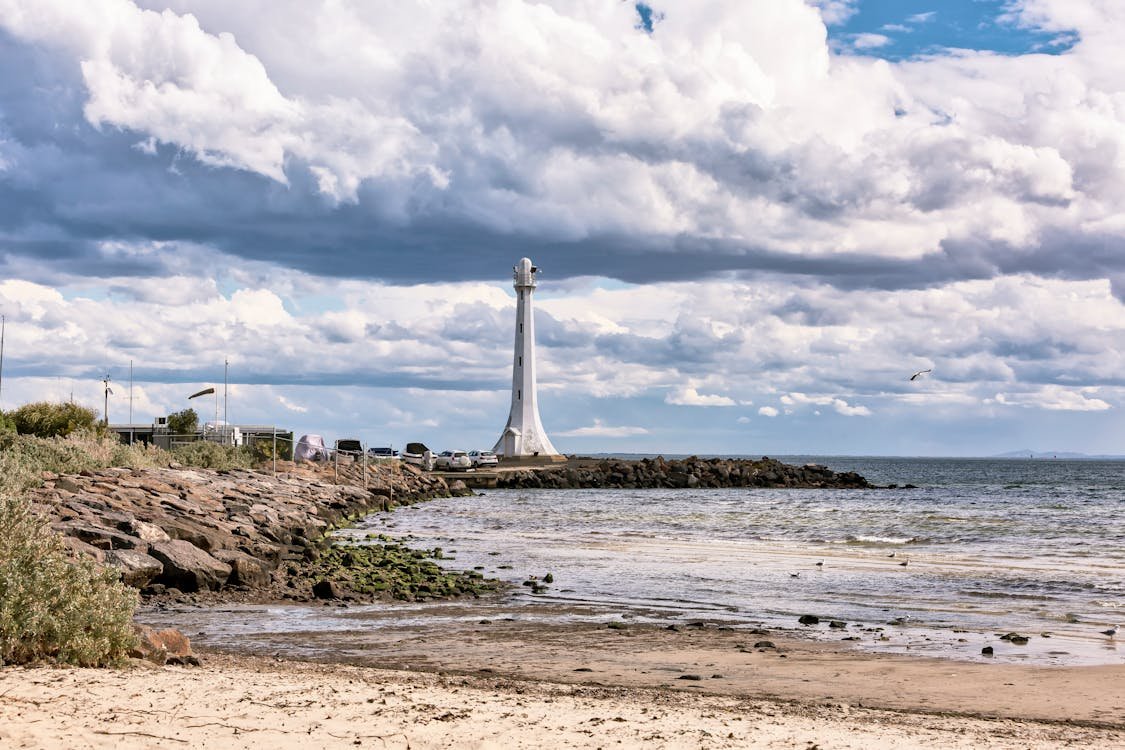
Image: St. Kilda Beach
Western Beaches
Perth, Margaret River
- Best time: November to April
- Water temp: 19–23°C (66–73°F)
- Highlights: Cottesloe Beach, Prevelly (surf capital!), Scarborough
Northern Beaches
Cairns, Broome, Darwin
- Best time to swim: May to November (outside stinger season)
- Water temp: Warm year-round — 24–29°C (75–84°F)
- Highlights: Four Mile Beach (Port Douglas), Cable Beach (Broome), Mindil Beach sunsets
📶 Gohub beach bonus: Use your eSIM to check UV indexes, tide charts, or find the nearest patrolled beach — even when you’re off-grid near Cape Tribulation.
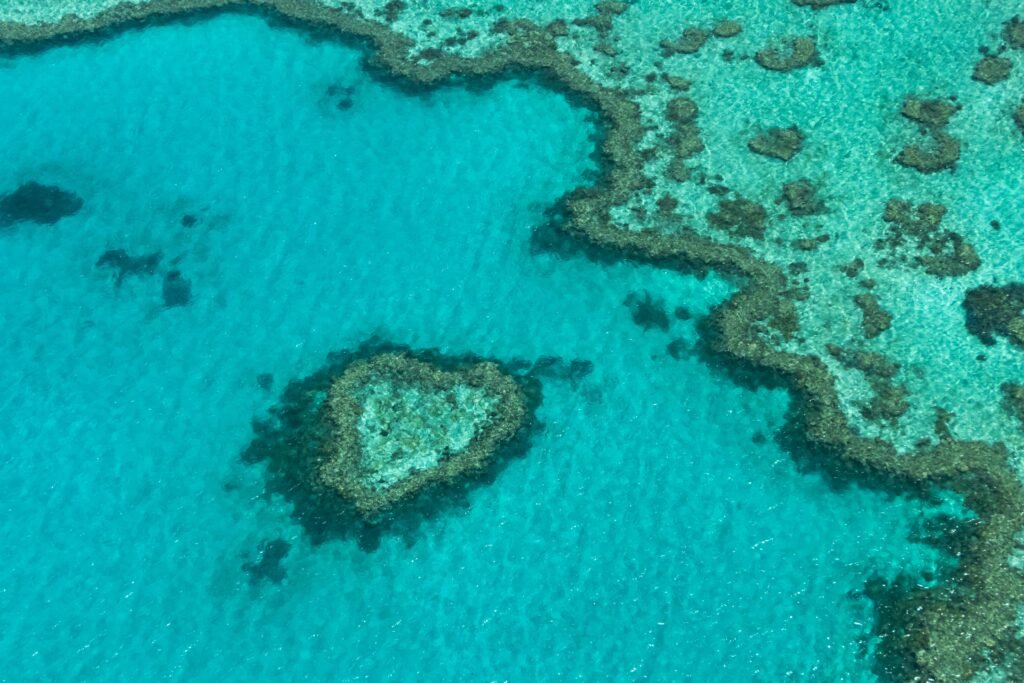
Best Time for Hiking and Outdoor Adventures
Australia’s trails range from misty rainforest boardwalks to rugged red-rock treks. Timing = comfort + safety — especially with intense sun, remote terrain, or snow-prone peaks.
Blue Mountains (NSW)
- Best time: March–May & Sept–Nov
- Why?: Cooler temps + minimal leeches = perfect hiking weather
- Top hikes: Grand Canyon Track, Three Sisters Lookout, Ruined Castle
Grampians (VIC)
- Best time: April–May & Sept–Nov
- Why?: Autumn foliage or spring wildflowers + stable weather
- Top hikes: Pinnacle Lookout, MacKenzie Falls, Mount William Summit
Larapinta Trail (NT)
- Best time: May to August
- Why?: Avoids extreme desert heat
- Top experience: Multi-day treks through the West MacDonnell Ranges — totally epic and remote
Cradle Mountain (TAS)
- Best time: December to April
- Why?: Dry, clear skies, but still chilly = prime conditions
- Top hikes: Dove Lake Circuit (day hike) or the iconic Overland Track (multi-day)
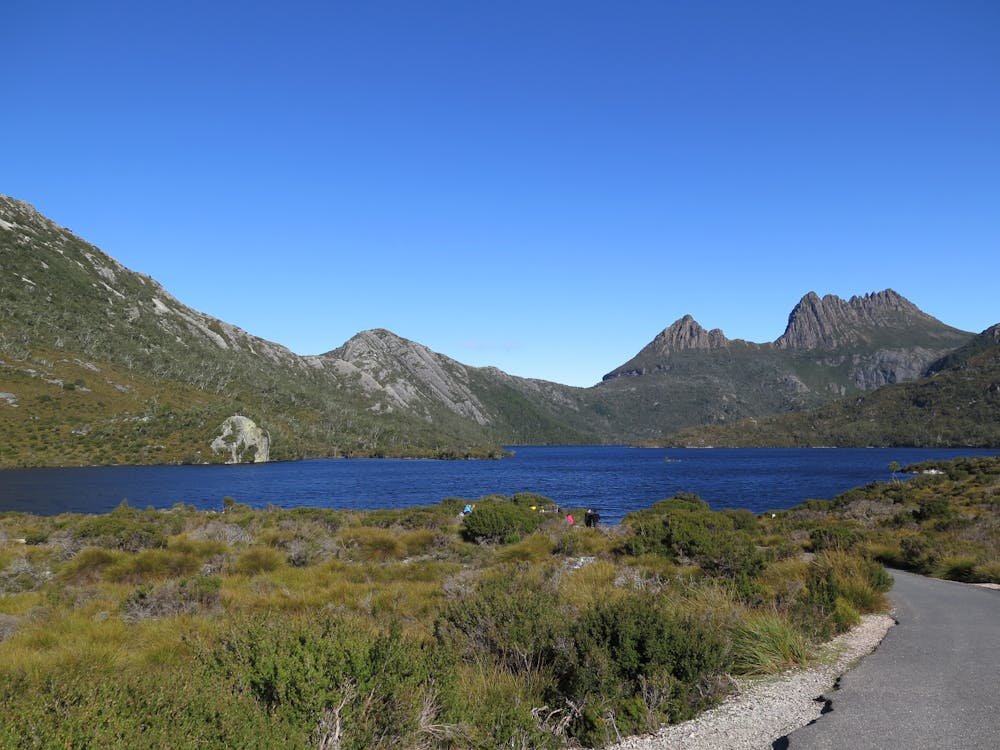
Image: Dove Lake Circuit
Hiking tip: Always check local trail conditions, carry more water than you think you need, and download offline maps in advance.
📱 Gohub in the wild: Stay GPS-connected on long treks, receive park alerts, or contact emergency services if needed — no signal stress, just safe exploring.
VII. Regional Deep Dive: Seasonal Experiences Across Australia
Australia isn’t just massive — it’s a continent of contrasts. From the snow-dusted peaks of Tasmania to the steamy tropics of Darwin, the climate can shift wildly from one region to the next.
That means the “best time to visit” depends not just on the season, but on where you’re headed and what you’re chasing: sunshine, surf, starry skies, or food festivals.
In this section, we’ll dive into each state and territory — breaking down the vibe by season so you know exactly when to go, and what to expect when you get there.
✨ Whether you’re a city-hopper, a wilderness wanderer, or a chill-by-the-coast kind of traveler, there’s a perfect time (and place) in Australia just waiting for you.
Best Time to Visit Tasmania
Don’t let Tassie’s size fool you — this island state punches way above its weight in terms of natural beauty, foodie culture, and seasonal magic. From snow-dusted peaks to wildflower-covered valleys, every season here feels like a different world.
And with its compact roads and cozy towns, Tasmania is a road-tripper’s dream — just make sure you time it right.
Summer (Dec–Feb): Sunshine, Trails & Coastal Escapes
With long daylight hours and mild temps, Tassie’s summer is golden hour, all day.
- Perfect for:
- Hiking in Freycinet or Cradle Mountain
- Beach days at Wineglass Bay
- Festival hopping in Hobart
- Weather:
15–23°C (59–73°F), dry and breezy - Seasonal Highlights:
- MONA FOMA – Hobart’s artsy, weird, brilliant music festival
- Taste of Tasmania – Local food, wine, cider… heaven
- Lavender fields in bloom – Instagrammable AF at Bridestowe Estate
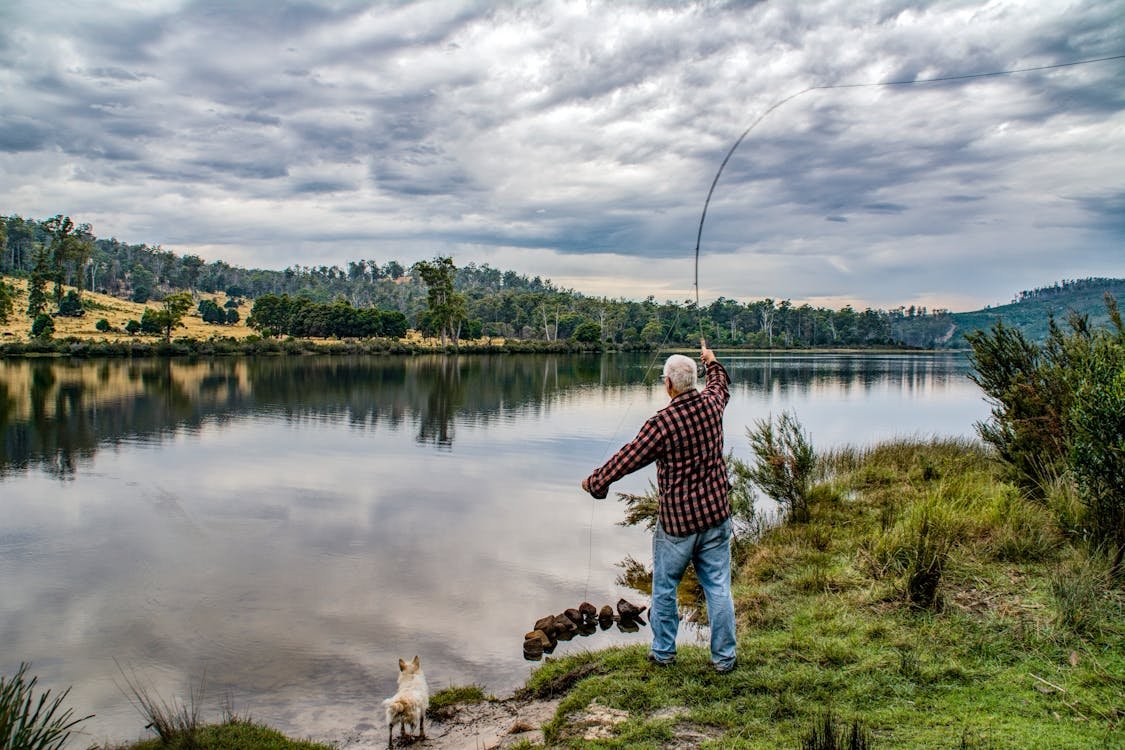
Image: Ouse, TAS, Australia
Autumn (Mar–May): Foliage, Pinot, and Golden Light
Tassie’s fall is peak cozy travel vibes. Cool, crisp air. Dramatic color. Harvest festivals. Basically, a mood.
- Perfect for:
- Leaf-peeping road trips
- Winery tours in Tamar Valley
- Fireplaces + farm stays
- Weather:
10–18°C (50–64°F), cool and comfortable - Seasonal Highlights:
- Turning of the Fagus – Australia’s only native deciduous tree puts on a golden show
- Food & wine festivals – Perfect for sipping and sampling local fare
- Autumn markets – From apples to artisan cheeses
💡 Gohub bonus: Stay connected to forecast changes, festival updates, or route planning — especially handy when you’re exploring those quiet countryside lanes.
Winter (Jun–Aug): Snow, Solstice & Southern Lights
Yes, Tasmania gets real winter — think misty mornings, snowy peaks, and the kind of dark, brooding skies that are perfect for the Aurora Australis.
- Perfect for:
- Stargazing and chasing the Southern Lights
- Immersive winter festivalS
- Snowy escapes in the highlands
- Weather:
5–12°C (41–54°F), sometimes lower in the mountains - Seasonal Highlights:
- Dark Mofo – Hobart’s strange, seductive midwinter celebration of art, fire & darkness
- Snow at Cradle Mountain – Ideal for snowshoeing or cozy cabin stays
- Aurora Australis viewing – With a bit of luck and clear skies, pure magic
🧭 Pro move: Download an aurora app and use your Gohub eSIM to track real-time solar activity — don’t miss your chance when the sky starts to glow green and pink.
Spring (Sep–Nov): Baby Wildlife & Blooming Trails
Western Australia isn’t just big — it’s planet-level big. From Mediterranean vineyards in the south to coral reefs and gorges in the north, WA packs in multiple climate zones, all running on their own seasonal clock.
Here’s when (and where) to go to experience this vast, sun-soaked slice of Australia at its best.
- Perfect for:
- Wildlife watching
- Garden walks
- Outdoor adventures without the summer crowds
- Weather:
10–17°C (50–63°F), some variability (layers recommended) - Seasonal Highlights:
- Spring wildflowers in Mt Field and Ben Lomond
- Baby animals at Bonorong Wildlife Sanctuary or Maria Island
- Launceston’s gardens in full bloom
Best Time to Visit Western Australia – Coastlines, Reefs & Red Earth
Western Australia’s vast size encompasses multiple climate zones requiring different timing considerations.
Perth & The Southwest – Wine, Wildflowers & Coastal Chill
The southwest corner of WA is like a secret European summer tucked into Aussie soil — think rolling vineyards, world-class beaches, and quaint coastal towns.
- Best time to visit:
- Spring (Sep–Nov) for wildflowers & vineyard views
- Autumn (Mar–May) for cooler beach days & gourmet road trips
- Weather:
15–25°C (59–77°F), dry and pleasant - Seasonal Highlights:
- Margaret River wine region – sip and surf in one day 🍷🏄
- Boranup Karri Forest – towering trees, dappled sunlight
- Wildflower bloom – millions of blossoms from coast to bush
- Rottnest Island – sunny days + quokkas = happiness
📶 Gohub eSIM tip: Use your data to follow winery trails, check tide charts at Injidup, or get directions to that one bakery in Denmark locals swear by.
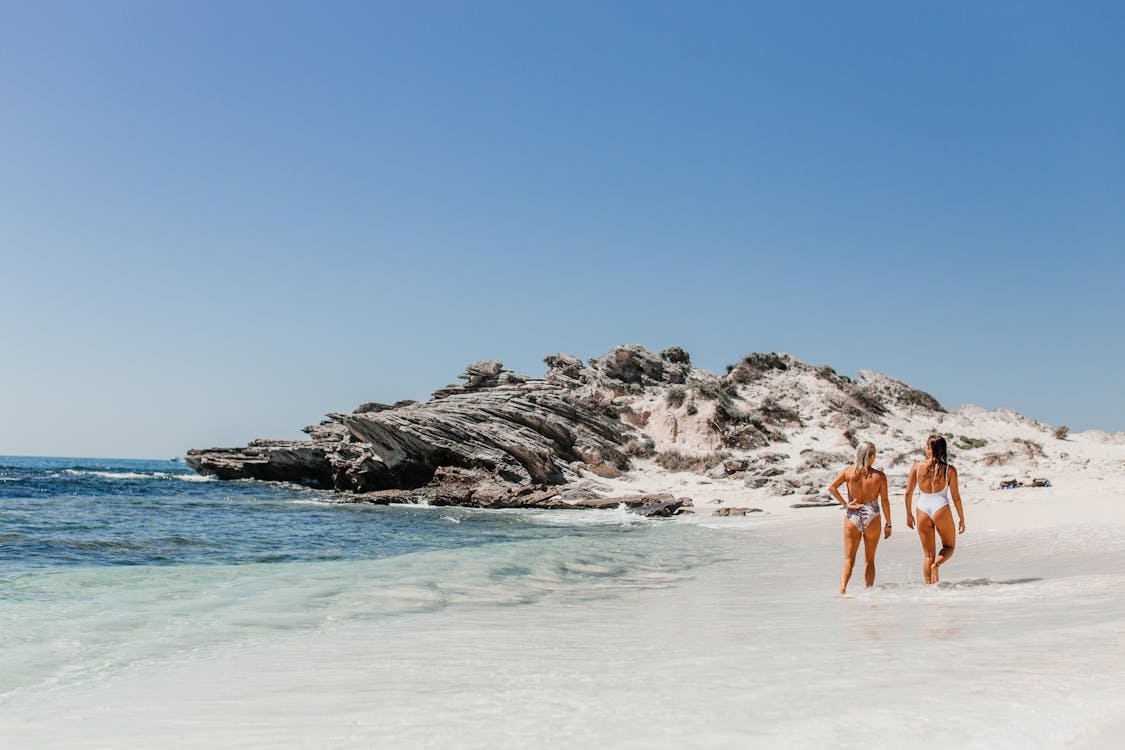
Image: Perth, WA
Ningaloo Reef – Where You Swim with Giants
Forget the crowds at the Great Barrier Reef — Ningaloo is where the real magic happens. Here, you can literally swim alongside whale sharks in water so clear it feels surreal.
- Best time to visit:
- March to July – Whale shark season
- August to October – Humpback whales cruising through
- Weather:
25–30°C (77–86°F), warm days & cool nights - Seasonal Highlights:
- Coral Bay & Exmouth – dreamy beach towns with reef access
- Ningaloo Reef snorkeling – from the shore, no boat required
- Whale shark tours – bucket list stuff (and eco-certified)
🧠 Pro tip: Book marine tours well in advance — peak season fills fast. Use your Gohub eSIM to compare operators, read reviews, and check weather forecasts before you book.
The Kimberley – Australia’s Last Frontier
This is the wild heart of WA — red cliffs, dramatic waterfalls, and vast gorges carved by ancient rivers. But it’s also one of the most remote regions on Earth, so timing is absolutely everything.
- Best time to visit:
May to September (the dry season) — roads are open, skies are clear - Weather:
25–35°C (77–95°F), dry heat, cool nights - Seasonal Highlights:
- Bungle Bungles (Purnululu National Park) – striped beehive domes straight from a dream
- Mitchell Falls – four tiers of cascading water (when flowing!)
- Lake Argyle – vast, serene, and crocodile-approved 🐊
- Gibb River Road – iconic 4WD track through remote gorge country
📶 Gohub Outback tip: Coverage can be patchy, but your eSIM gives you critical access to maps, fuel stops, and emergency contacts — especially important for self-drive explorers.
VIII. Seasonal Events and Festivals Worth Planning Around
Australia doesn’t just do nature — it knows how to throw a party. From beachside arts festivals to dark, neon winter rituals and world-class sporting showdowns, the event calendar is packed year-round.
🧠 Pro tip: These dates often coincide with peak flight prices and full accommodations, so planning ahead (and packing smart) is everything.
Here’s what’s happening — and when to go if you want to be right in the middle of the action:
Summer (Dec–Feb): Sunshine, Sports & Seaside Spectacle
This is the season when everything is happening outdoors — big crowds, bold energy, and that perfect golden glow.
- Sydney to Hobart Yacht Race (Dec 26) – Australia’s iconic Boxing Day showdown on water.
- Australian Open (January, Melbourne) – The first Grand Slam of the year. Tennis, celebs, rooftop bars.
- Sydney Festival (January) – Art, theatre, music, dance… all over the city.
- Adelaide Fringe Festival (Late Feb–March) – The second-largest arts festival in the world, and it shows.
📶 Gohub tip: Use your eSIM to grab last-minute event tickets, check public transport to venues, or livestream your Aussie Open courtside view (hello, bragging rights!).
Autumn (Mar–May): Foodies, Fashion & Neon Nights
Crisper weather, golden leaves — and a calendar filled with flavour, lights, and rhythm.
- Melbourne Food and Wine Festival (March) – Street eats, fine dining, laneway vino — a must for taste chasers.
- Byron Bay Bluesfest (Easter weekend) – The ultimate laid-back music fest near the sea.
- Vivid Sydney (May–June) – Light projections, immersive art, music across the harbour. Pure magic.
- Australian Fashion Week (May, Sydney) – Where the style set gathers — expect heels, cameras, and attitude.
📲 Planning ahead? Gohub eSIM = your festival lifeline for line-up changes, weather alerts, and navigating to those hidden Vivid installations without missing a beat.
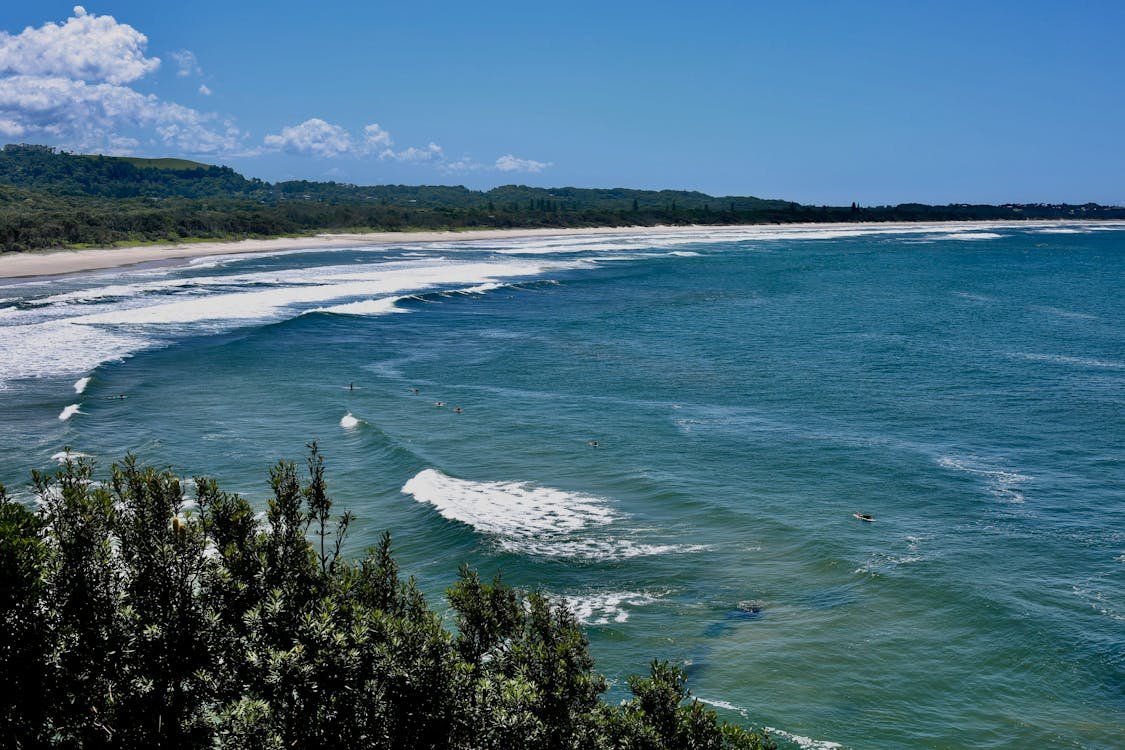
Image: Byron Bay Bluesfest
Winter (Jun–Aug): Fire, Art, and Outback Culture
Australia’s winter brings a darker, more reflective vibe — perfect for fireside storytelling, Indigenous art, and surprise aurora moments.
- Dark Mofo (June, Hobart) – Bonfires, midnight rituals, nude swims. Weird, wonderful, unmissable.
- Sydney Winter Festival (July) – Ice rinks, mulled wine, and pop-up alpine villages by the water.
- Darwin Festival (August) – Tropical nights, open-air performances, Indigenous culture front and center.
- Cairns Indigenous Art Fair (July) – A celebration of Aboriginal and Torres Strait Islander art & heritage.
Winter (Jun–Aug): Fire, Art, and Outback Culture
Australia’s winter brings a darker, more reflective vibe — perfect for fireside storytelling, Indigenous art, and surprise aurora moments.
- Dark Mofo (June, Hobart) – Bonfires, midnight rituals, nude swims. Weird, wonderful, unmissable.
- Sydney Winter Festival (July) – Ice rinks, mulled wine, and pop-up alpine villages by the water.
- Darwin Festival (August) – Tropical nights, open-air performances, Indigenous culture front and center.
- Cairns Indigenous Art Fair (July) – A celebration of Aboriginal and Torres Strait Islander art & heritage.
📶 Gohub bonus: Real-time schedules, artist profiles, and up-to-date venue info — even in the cool corners of Tassie or the Top End.
Spring (Sep–Nov): Blooms, Races & Gourmet Getaways
Spring is fresh, floral, and full of celebration — the season of new energy (and big bets ).
- Floriade (Sep–Oct, Canberra) – Australia’s biggest flower festival = pure spring joy.
- Melbourne Cup (First Tuesday of Nov) – Fashion, champagne, and the race that stops a nation.
- Margaret River Gourmet Escape (Nov) – Food, wine, ocean views = WA’s luxury picnic of dreams.
- Brisbane Festival (September) – River shows, firework finales, and all the warm-weather feels.
📲 Gohub’s got your spring sorted: Stay on top of dress codes, weather shifts, and ticket drops — because missing the Gourmet Escape = ultimate foodie heartbreak 😢
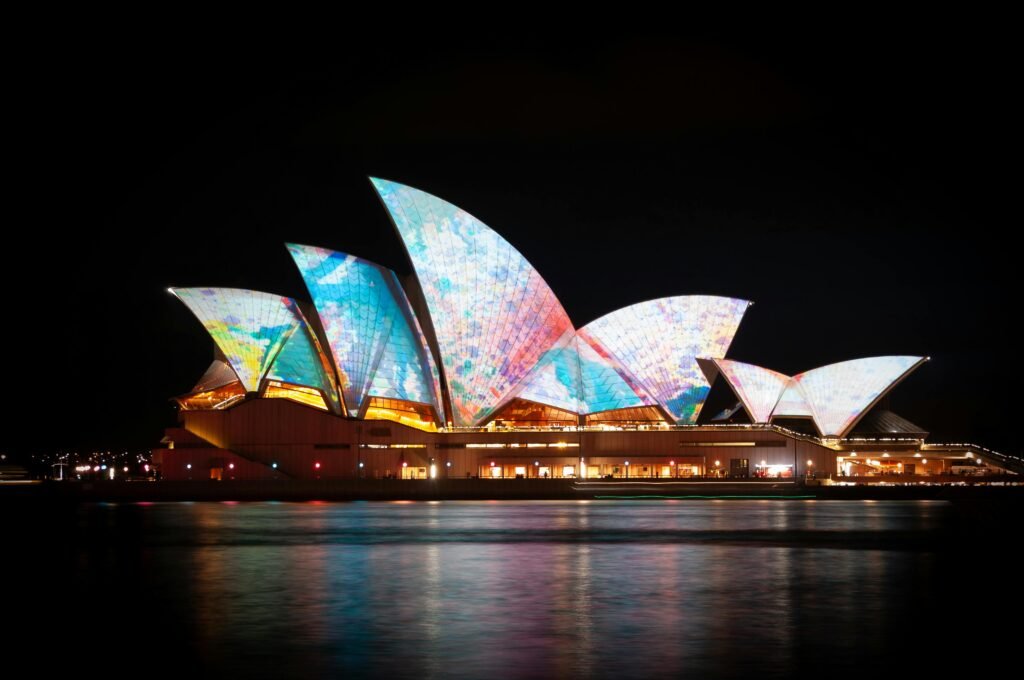
Image: Vivid Sydney light festival with Opera House illuminated in colorful projections.
IX. Budget Considerations: How Australia’s Seasons Affect Prices
et’s be real: Australia isn’t cheap. But with smart seasonal timing, you can stretch your travel dollars without sacrificing experience.
Here’s how the seasons impact your wallet:
High Season: December–January, June–July
The big holiday periods = big crowds and big price tags.
- Accommodation spikes by 25–50%, especially near beaches
- Flight prices surge, particularly around Christmas & New Year
- Book months in advance for coastal towns or festivals
💡 Best for: Travelers who prioritize vibe & events over savings (but don’t mind the splurge).
Shoulder Season: February–March & October–November
The sweet spot for many travelers — lower prices and lovely weather.
- Better value on hotels & AirbnbEasier to find availability at top attractions
- Great time for multi-region itineraries (less heat, fewer people)
💡 Best for: First-timers or savvy travelers looking for comfort and value.
🧳 Low Season: May & August–September
Underrated but awesome — if you know where to go.
- Best hotel deals and flight promos
- Top End (e.g., Darwin, Cairns) is perfect — dry, warm, gorgeous Southern regions may see more rain or chill, but fewer crowds
💡 Money-Saving Tip: Head north during southern winter — sunshine and savings? Yes, please.
📱 Gohub bonus: Use your eSIM to track deals, rebook flexible flights, and stay up-to-date on shifting shoulder-season weather — no Wi-Fi? No worries.
X. Conclusion: Finding Your Perfect Time to Visit Australia
There’s no single “best time” to visit Australia — and honestly, that’s the beauty of it. Whether you’re chasing sunshine, festivals, wildlife, or wine country, somewhere in Australia is always in season.
- Love beach days + city buzz? Try Nov–March
- Prefer crisp hikes & food festivals? Aim for March–May or Sep–Nov
- Want tropical heat without summer chaos? June–August up north is chef’s kiss 👨🍳💨
For most first-timers looking to cover multiple regions, shoulder seasons (March–May & September–November) offer the best blend of pleasant weather, reasonable prices, and fewer crowds.
🧠 Reminder: Australia’s seasons are the reverse of the Northern Hemisphere — so pack and plan accordingly!
📲 Before You Go: Stay Seamlessly Connected with Gohub eSIM
Whether you’re navigating Sydney’s metro, uploading reef dives in Cairns, or checking Kakadu weather before that epic sunrise hike — you’ll want smooth, reliable internet at every step.
- Instant activation
- Nationwide coverage
- No roaming fees, ever
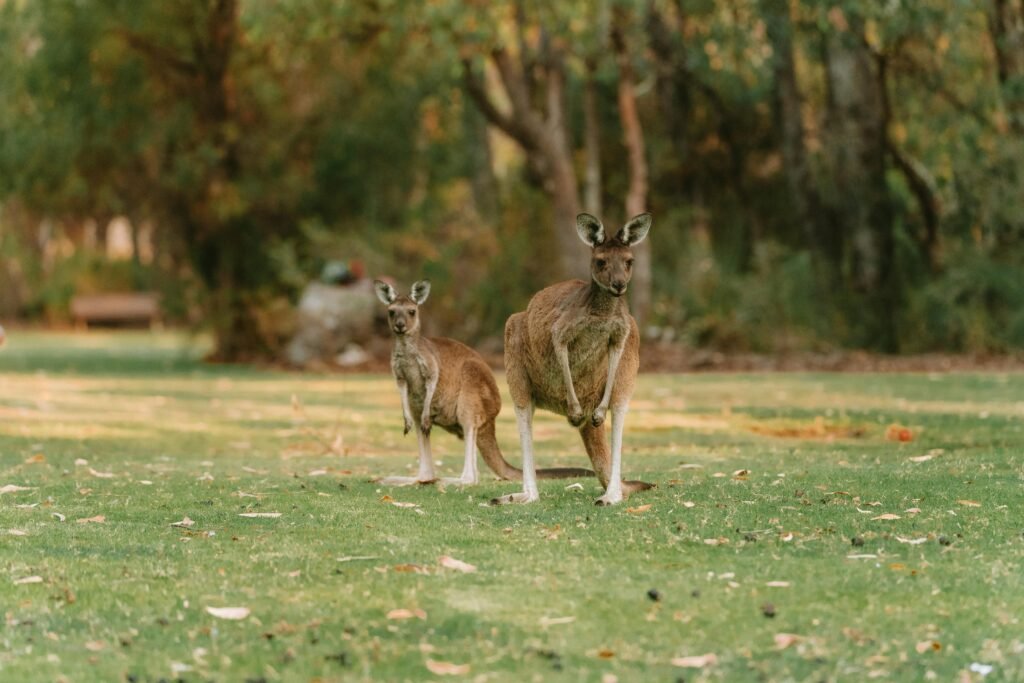
Image: Kangaroos on a beach at sunrise with tourists watching from a distance.
📶 Whether you’re surfing in Byron or hiking the Blue Mountains, stay connected with a Gohub eSIM for Australia. Instant activation, no contracts, just pure Aussie freedom.


